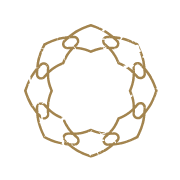Breaking the Cycle: Bouncing Back from Injuries and Rediscovering Confidence in Fitness
Don’t let a local injury become a global weakness!
Ever find yourself throwing in the towel every time a nagging injury shows up? We’ve all been there. But here’s the deal—ditching training every time you face a setback keeps you stuck in what I call the “injury cycle.”
Trust me; I’ve been down that road more times than I can count. Torn hamstrings, back pain that felt like it had its own zip code—you name it. These weren’t cool war wounds with epic stories. They were glaring signs that my training needed a serious upgrade, but I refused to listen.
Instead, I’d wait until the pain scared me into inactivity, which led to weakness everywhere. That weakness became the foundation for a new injury the moment I jumped back in, assuming I could pick up where I left off. And just like that, the cycle repeated.
Breaking the Cycle of Injury
Injuries aren’t just physical roadblocks; they’re patterns of behavior. Here’s the typical cycle:
Ignore the twinges.
End up in unbearable pain.
Fear movement and quit training altogether for months.
Lose strength and confidence.
Start over, dive back in too quickly, and repeat the cycle.
Sound familiar? It’s time to break free by staying engaged, adjusting your approach, and committing to consistent, intentional training.
Lessons from the Past
Flashback to my teens and early 20s, and you’d find me nursing injuries left and right—not from epic battles but from poorly designed training routines. It was frustrating, but instead of giving up, I decided to learn.
I dove into different training systems, picked the brains of practitioners, and started over with the basics. Fast forward 15 years, and I’ve never felt better. What changed? It wasn’t about chasing muscle mass or weight goals—it was about rediscovering how to move, breaking old habits, and most importantly, building trust with my body.
Building Trust with Your Body
Your body isn’t your enemy; it’s your partner. To build trust:
Be Present: Stop going through the motions on autopilot. Tune in to how your body feels during every movement.
Get Curious: Pain isn’t an enemy; it’s a guide. It’s your body’s way of requesting change. Explore what it’s telling you—maybe it’s a nudge to adjust your form or slow down.
Redefine Sensation: The goal isn’t to move without sensation. Aches and pains are part of being human. The key is understanding them—not avoiding them.
Listen to Advice, But Trust Yourself
Doctors, physical therapists, and trainers all have valuable insights, but remember: no one knows your body better than you. Often, well-meaning advice like “Avoid this movement” becomes an excuse for avoidance long after the pain is gone.
Listen, learn, and apply their recommendations, but trust your gut. No one else can feel what’s happening inside you.
Stay Consistent, But Be Patient
Consistency doesn’t mean pushing hard every day—it means maintaining a practice that keeps you moving without increasing pain.
Here’s how to stay consistent:
Rest Strategically: If pain is severe, rest until you can handle basic life activities like walking or showering without pain. Then, begin gentle movements.
Modify Movements: Identify what hurts and adjust accordingly. For example, if deep knee bends cause pain, avoid squats for now.
Reduce Range of Motion (ROM): Pinpoint the aggravating part of a movement and avoid that range while staying within what feels good.
Lighten the Load: Lowering the weight lets you focus on form and build muscle awareness, which reduces stress on joints and tendons.
Apply Progressive Overload: Gradually increase weight, ROM, or intensity—one variable at a time.
Have No Expectations: Healing isn’t linear. Some injuries heal quickly, others take time, and some might resurface. Be patient and stay adaptable.
Final Thoughts
Injuries aren’t roadblocks; they’re detours on the journey to a stronger, more resilient you. By embracing the twinges, staying curious, and staying consistent, you ensure that a local injury never becomes a global weakness.
Got a story about bouncing back from an injury? We want to start to doing a video series on members who have learned lesson through injuries and would love to feature it!
